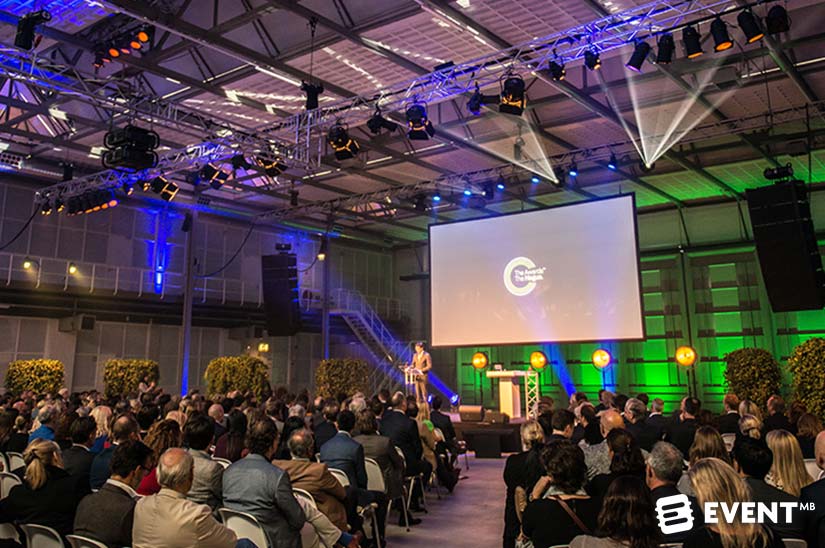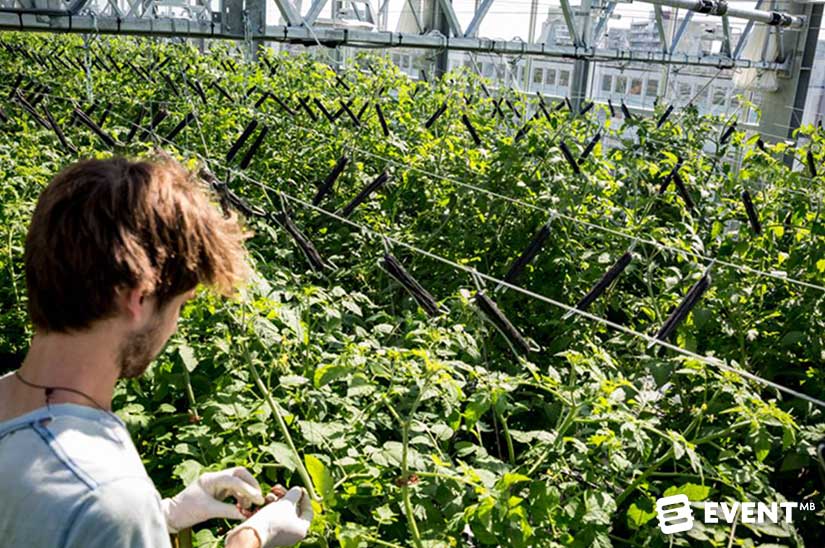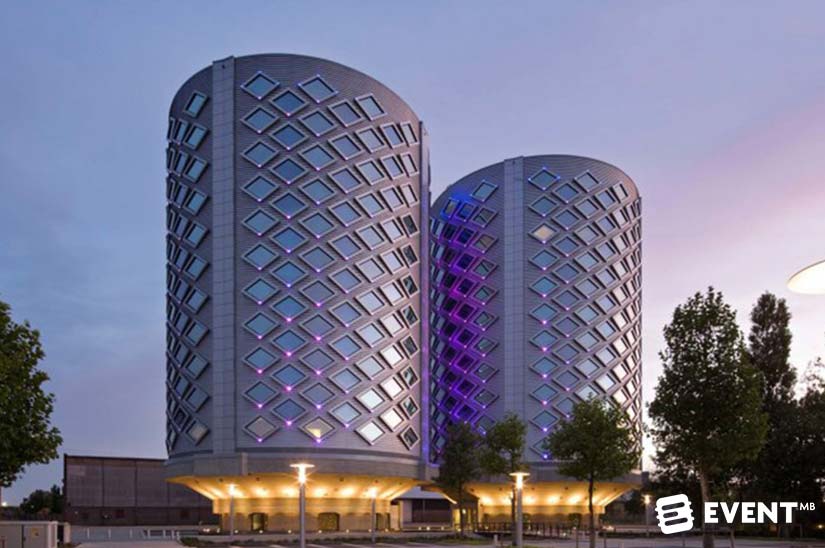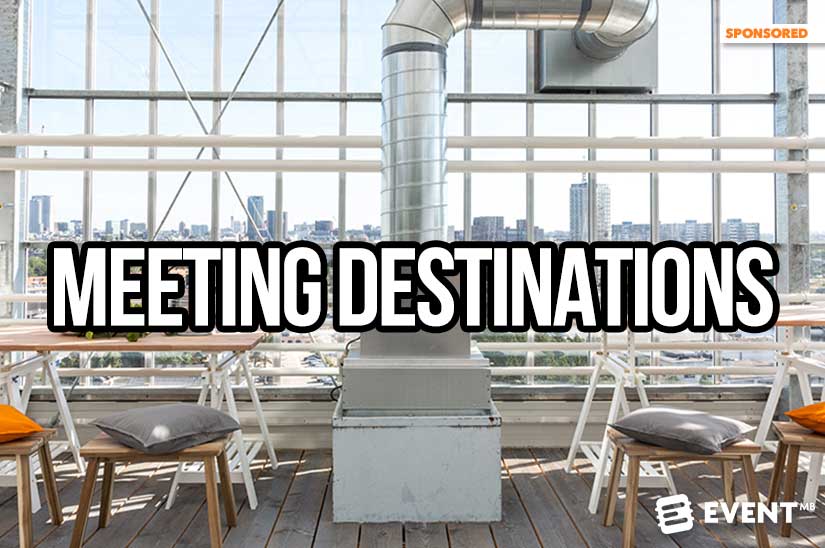Skift Take
Cities are constantly changing, offering event planners new and exciting opportunities to host memorable events. Urban development is unlocking the potential of unique and alternative event venues in destinations worldwide.
This is a sponsored post written by The Hague Convention Bureau.
Over the past decades, many metropolitan areas have gone through extensive and rapid change, transitioning from bohemian neighborhoods to modern and sought-after districts. While gentrification is mostly discussed in the context of urban development and housing, there is more to it as it also affects the international meeting industry.
##abovethefold##
Urban Development and the Opportunities for Events
The gentrification process is the wide-ranging renovation of deteriorated neighborhoods. Cheap rent and an abundance of space attract individuals and companies alike to move their offices to up-and-coming areas. Nowadays, an increasing need for space and ambitious plans of local governments and property developers lead to waves of gentrification throughout international metropolitan areas.
Some of the best examples of this can be found in New York City and Atlanta and European cities such as London, Amsterdam, and Berlin. The results are modern apartments, inspiring office buildings and refreshing meeting and event locations.
Here are six ways event planners can benefit from urban development:
-
Unique and Original Event Spaces
Buildings filled with history open plenty of opportunities to new functions. One inspiring example of this can be seen in The Hague, the Netherlands, where an aircraft engineering school has been repurposed to serve as a conference center. The Fokker Terminal is a 2,000 square meter hangar that underwent an extensive refurbishment and now offers event organizers a multi-purpose exhibition and event hall with 17 additional break-out rooms. The charm of the old hangar continues to live on in the Fokker Terminal. Two original hangar doors are accentuated to provide a unique atmosphere and give event delegates a glimpse into what the hangar looked like before it became an event location.


-
Better Infrastructure
The event infrastructure of a destination is highly dependent on the effort of local organizations and governments. Often the further development of a city’s event infrastructures depends on funding and investments which can have a significant economic impact on the region. For example, developing transport networks and WiFi speeds is a city-wide commitment and a big undertaking that everyone can benefit from over the long term.


Cities are recognizing the important economic contribution that events make and the multiplier effect across the region. The local government in The Hague saw this potential and supported the renovation of the city’s main conference center, World Forum The Hague, investing 28 million Euro. Next to remodeling of existing venues, the access via airports and low-budget airlines have made destinations more available. The Schiphol airport the hub of the Netherlands with 320 flight daily connections to European and intercontinental destinations.
-
Digital Advancement
The 21st century has brought many changes in the way we work, communicate, and meet. The digital transformation is fundamentally changing the workforce and business event industry. Nowadays, fewer one-on-one meetings are held, as found by the Grass Roots Meetings Industry Report 2018. Due to the digitalization and development of technology, there are many ways to hold smaller meetings online. At the same time, larger-scale events and conferences are on the rise and event planners explore digital trends such as virtual site visits and hybrid events. The International Congress and Convention Association (ICCA) reported that 831 association meetings were held in the US in 2014. In 2016 the number of conferences and conventions held in the US increased to 934 and rising.
-
Changing Attendee Demands
The digital transformation is also associated with the demographic change within the business event industry. Conference and MICE expert, Mr. Rob Davidson predicts that by 2025, 75% of the global workforce will be part of Generation Y, born between the 1980s and late 1990s. In less than 10 years, more than half of event participants will have different demands than delegates and event attendees 20 years ago. This not only influences attendees’ usage of technology during an event but also the way event planners choose event destinations and locations in the first place.
-
Emergence of Alternative Destinations


Davidson estimates that most millennials in Europe will have traveled to major cities such as London, Amsterdam, and Paris by the time they are 25. It is alternative destinations that offer a new incentive to attend a conference or event abroad for Generation Y. He offers The Hague as an example, explaining that the city’s allure as a “novelty” destination and its proximity to Amsterdam Schiphol Airport will easily win over many event delegates. Delegates within Generation Y are more open to going to second and third tier destinations that are less visited than tourist hot spots. Here they can explore the city’s culture, museums, nightlife and shopping opportunities, off the beaten track.
-
An Unconventional Approach: Combining Work and Play
For Generation Y delegates combining business and inspiration play an important role. Next to the event destination, unconventional and less traditional venues are significant to captivate and impress younger generations. It is simply not enough to spend a couple of days in a conference center. Today, delegates are looking for venues with natural light and an unconventional approach. Ideally, it should have an outstanding WIFI connection and a unique design and history.


Alternative locations have the potential to impress attendees due to their unconventional style and the stories they can share. UrbanFarmers in The Hague is the biggest urban farm in Europe. The building was designed by architect Dirk Roosenburg in the 1950s for a major Dutch technology company. Today, fresh vegetables and fish are cultivated here. The rooftop greenhouse offers guided tours and an unusual event location overlooking the city of The Hague. Event planners can book guided tours that invite attendees to harvest vegetables which can later be used during cooking classes in nearby locations such as Diner Thuis.
What Does the Future Hold for Meeting Destinations?
The future of meeting destinations is closely connected to the transformation of urban areas and the development of cities event infrastructure. The gentrification process in cities worldwide is only just starting to gain strong momentum. This means that in the next few years more and more inventive event locations, architecturally innovative hotels and cultural hotspots will be opening for event planners.
The evolution of venues and boost of infrastructure holds a lot of potential for event organizers as venues offer creative and custom event solutions that will appeal to attendees and leave an impression.
-
Cultural Hotspots
Oftentimes, event organizers rely on familiar destinations and locations that have worked for them in the past. However, new cities and venues have much potential for an unforgettable event. Converted buildings have a special atmosphere and can tell a unique story. A historical yet modern venue is Caballero Fabriek that has opened their doors to event organizers. The former cigarette factory was renovated to a multifunctional business centre, attracting innovative and creative business in The Hague. Next to the co-working area, the Caballero Fabriek offers modern meeting rooms, a conference- and event hall. One can enjoy an atmosphere of creativity and innovation here, with numerous tech, multimedia companies and design agencies that work alongside. Many of the rooms are restored to their original state now proudly featuring the recognizable style of the era.
Another location with a special biography – suitable for bigger events – is Remise, an old coach house. It is an event location that will satisfy event planners who are looking for something quite extraordinary. The building served as remise from 1906 until 1983. In 1989 The Hague’s Public Transportation Museum moved in and today it serves as an event location for up to 500 delegates. The industrial complex has an open event space of 3,800 square meters. The monumental architecture of the building is beautifully nuanced by the original decorative details. A salon and hall offer many different setups for corporate events. Break-out session and workouts can be held in tram carriages that can be brought into the remise hall.
-
Architectural Innovation
Co-working spaces and creative melting pots pop-up in metropolitan areas worldwide. According to Forbes and the Global Working Survey 2017, coworking spaces are on the rise and have doubled since 2014. Many international developers have picked up on this trend offering flexible workspace in urban areas throughout the US.


Spaces is a bright and creative meeting location that combines its historic past with a contemporary style. The complex was initially built for an American oil company and was intended to leave a mark in the city and to be higher than the Dutch competitors’ building. Consequently, the enterprise invested a large sum into building the art deco building, which is equipped with precious natural stone and the finest wood that could be found in the 1930s. Today, the building is used as open office space with many creative companies located in the building. It combines a modern Dutch interior with its visually appealing historic style. Moreover, it offers great meeting facilities that accommodate workshops, hackathons and events for up to 300 attendees.
How To Use An Event Destination To Its Full Potential
There are many ways to find the right information and to plan an event abroad. Next to agencies and PCOs, local organizations such as convention bureaus can provide new opportunities that have not yet been explored. Inside information about up and coming event venues, financing and suppliers can be accessed through convention bureaus. Here are three tips to use a CVB to get more from your event destination:
-
Familiarize Yourself
What better way is there than to explore a potential destination during a fam trip. Today, many cities offer hosted fam trips that give event planners the chance to get a glimpse of the city and to discover its attractions, venues and incentives during site inspections, walking tours, lunch and dinners. It is on fam trips that event organizers can visit unconventional venues and hidden gems that have the potential to impress event attendees.
-
Partner Networks
Convention bureaus are the main sources of information for event planners and have great ties to hotels, vendors and venues in the city. Well-connected convention bureaus with far-reaching partner networks give event planners plenty of opportunities to benefit from the city’s event infrastructure.
-
Find Out About Financial Benefits
Planning an event within budget can be a challenging task and often puts organizations under financial pressure. Local organizations such as convention bureaus and governments understand the problems of finding funds to organize an event abroad. Therefore, more and more convention bureaus offer financial support by means of conference subvention funds that ensure the pre-financing and guarantee attendance of the event.
In Conclusion
Local convention bureaus can unlock a lot of potential and point event planners towards new destinations and modern and unique locations. The changing city landscapes, improving event infrastructures and work of local convention bureaus present event planners with many opportunities. For more information about The Hague, contact The Hague Convention Bureau.






